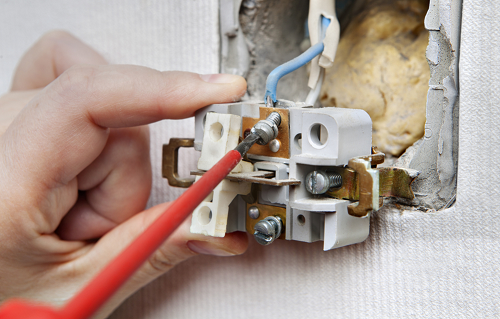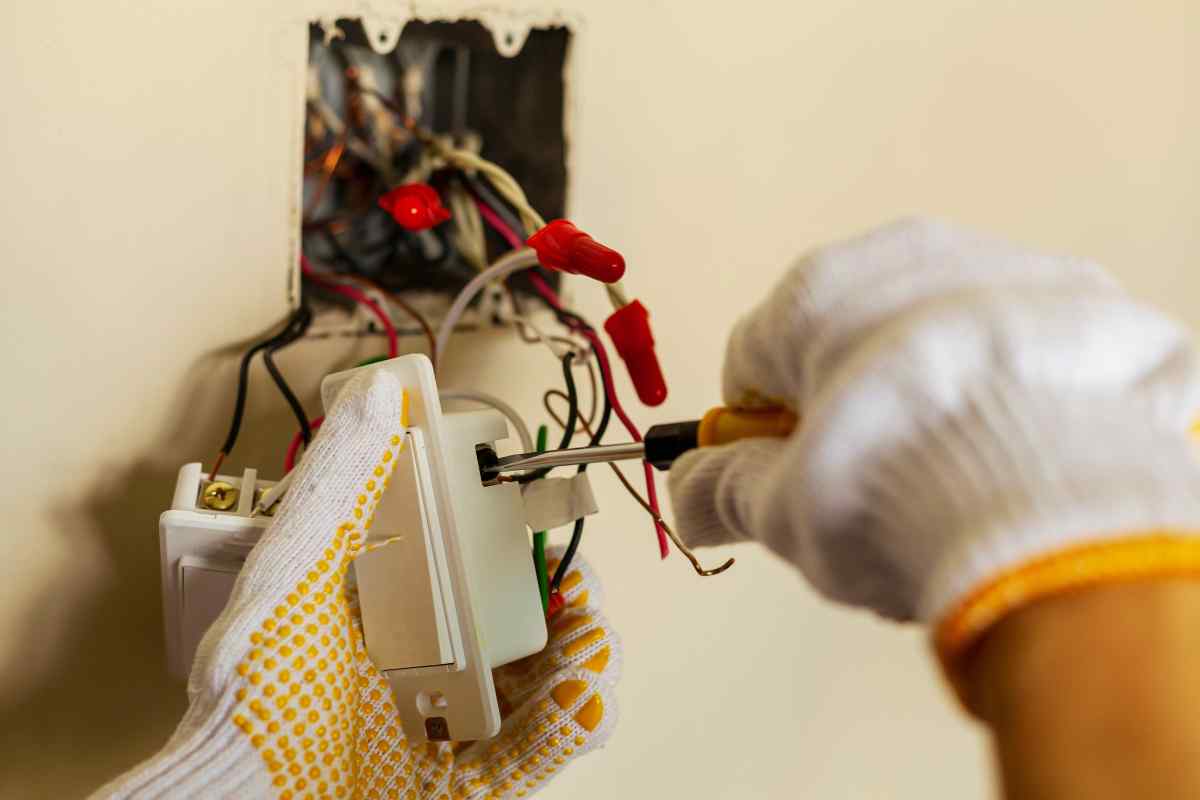Common Electrical Problems Every Homeowner Need To Find out about
Property owners often come across numerous electrical issues that can influence safety and security and functionality. Issues like flickering lights and stumbled circuit breakers are more common than several realize. These scenarios can show much deeper electrical worries that warrant interest. Understanding the dangers and indications connected with out-of-date circuitry and dead outlets is vital. What steps can be required to stop these troubles? Exploring these usual electrical issues might disclose essential insights for maintaining a safe home setting.

Flickering Lights: Reasons and Solutions
Why do some property owners experience flickering lights? Flickering lights can be an usual annoyance, typically suggesting underlying electric concerns. One primary reason is damaged or loosened links within lights or electrical wiring, which can result in recurring power supply. In addition, utilizing high-wattage home appliances on the same circuit may trigger voltage variations, leading to lowering or flickering. One more potential problem is an overloaded circuit, where a lot of gadgets attract power at the same time, stressing the electric system. In addition, outdated or degraded wiring can contribute to inconsistent electrical circulation. In many cases, flickering lights may indicate an issue with the home's electrical panel or solution line. Property owners ought to deal with flickering lights immediately to prevent possible hazards. Solutions may consist of tightening up connections, rearranging home appliance tons, or speaking with a qualified electrician for an extensive assessment. Identifying the origin can help ensure a secure and stable electric system in the home.
Tripped Circuit Breakers: What You Required to Know
Have homeowners ever before wondered what causes their breaker to journey unexpectedly? This common problem frequently occurs from an overload of electrical circuits, where way too many gadgets draw power at the same time. In such cases, the breaker functions as a security device, interrupting the circulation of electrical power to protect against getting too hot and potential threats. One more frequent reason is a short circuit, which occurs when a live cable calls a neutral wire, developing a rise of power that trips the breaker. Ground faults can additionally result in stumbled breakers; these happen when a real-time wire touches the ground or a based surface area, posturing severe safety and security risks. Property owners ought to consistently examine their usage of high-wattage appliances to avoid overloading circuits. Furthermore, recognizing the feature of circuit breakers can assist them react appropriately throughout a journey, ensuring their home stays secure and well-maintained.
Out-of-date Wiring: Risks and indications
Out-of-date circuitry can posture substantial threats to property owners, commonly going undetected till issues develop. Residences constructed before the 1980s may still have light weight aluminum wiring or knob-and-tube systems, which are no more taken into consideration safe. Signs of outdated circuitry consist of flickering lights, regularly tripped circuit breakers, or shedding smells near outlets. These indicators may suggest that the electric system is loaded down or deteriorating.Additionally, property owners might see burn marks around electrical outlets or buttons, which can indicate getting too hot. The threat of electrical fires considerably boosts with outdated electrical wiring, as these systems were not designed to take care of modern electrical tons. Property owners are encouraged to have their wiring evaluated regularly, especially when refurbishing or adding new appliances. By acknowledging these signs early, they can stay clear of harmful scenarios and maintain a much safer living environment. Upgrading to current electric criteria is an aggressive step in keeping home safety and performance.
Frequently Blown Fuses: Repairing Tips
Frequent blown merges can indicate underlying electric issues that may come from outdated wiring or overloaded circuits. Homeowners experiencing this problem must initially recognize the appliances connected to the influenced circuit. It is suggested to prevent using several high-wattage gadgets all at once, as this can cause circuit overload. If the problem continues, checking the circuit box for indications of wear or damage is critical; a malfunctioning circuit box might call for replacement.Additionally, looking for loose links within the circuit can aid prevent future occurrences. Home owners should likewise validate that the integrates being utilized are of the proper amperage, as using an inaccurate fuse can aggravate the issue. Seeking advice from an accredited electrician is suggested to assess the electric system further if these fixing ideas do not deal with the concern. Dealing with these concerns immediately can assist dig this alleviate threats and ensure the security of the home's electric framework.
Dead Outlets: Common Causes and Fixes
When a house owner comes across a dead electrical outlet, it can usually give stress and this article complication. Numerous usual causes may result in this problem. One regular offender is a tripped breaker, which can be easily reset. If any kind of breakers are in the off placement, house owners must examine their electrical panel to examine. One more opportunity is a malfunctioning electrical outlet itself, which may call for substitute. In addition, loosened electrical wiring connections within the outlet can interfere with power circulation, making evaluation essential.Sometimes, the issue may stem from an overloaded circuit, specifically when several devices are attached. In such situations, redistributing the electric load can resolve the concern. Homeowners should likewise think about the age of their electrical wiring; older systems might call for updates to meet contemporary electrical demands. If these actions do not correct the circumstance, seeking advice from an accredited electrician is suggested to ensure safety and correct diagnosis.
Electric Shocks: When to Be Concerned
Exactly how can home owners identify whether an electrical shock warrants problem? Homeowners must initially analyze the severity and context of the shock. A light fixed shock, usually felt when touching metal things, is common and normally harmless. Nevertheless, if the shock happens while connecting with a plugged-in appliance or electrical outlet, it might indicate a more major issue.The area and regularity of the shocks are necessary. Repeated shocks from the exact same source, especially in damp areas like bathrooms or kitchens, can signify damaged wiring or poor grounding. Home owners need to also consider the feeling of the shock; a shock that triggers discomfort or contraction is much more disconcerting than a simple tingle.If there's any type of unpredictability, it is suggested to speak with a qualified electrical contractor. Disregarding prospective electric risks can learn this here now result in major safety risks, including fire or severe injury.
Overloaded Circuits: Avoidance and Precaution
Overloaded circuits posture considerable dangers in household settings, typically leading to electrical fires or tools damages (Accredited Service Provider Level 2 Electrician). Homeowners need to acknowledge the indicators of an overloaded circuit, such as regularly stumbled breakers or lowering lights. Executing preventative security practices can aid mitigate these threats and guarantee a more secure living environment
Acknowledging Overloaded Circuits
What indications suggest that a circuit may be overloaded? Property owners need to be watchful for numerous essential indications. Frequently tripped breaker or blown merges suggest extreme load on the circuit. Dimming or flickering lights, especially when various other devices remain in use, can represent a poor power supply. In addition, electrical outlets or switches that feel warm to the touch might indicate getting too hot, a prospective fire risk. Uncommon humming noises from outlets additionally warrant attention, as they can represent electrical issues. If appliances operate inefficiently or stop working to begin, it may be a sign of an overloaded circuit. Acknowledging these indications early can assist protect against serious electrical problems and promote a safer home setting.
Preventive Security Practices
To preserve a secure and efficient electric system, house owners have to implement preventive safety practices that attend to prospective circuit overloads. One efficient procedure is to prevent attaching too several tools to a solitary outlet, as this can surpass the circuit's capability. Utilizing power strips with built-in breaker can assist distribute power securely. Home owners need to additionally routinely check cords and home appliances for damage and change any type of malfunctioning tools promptly. It is critical to ensure that circuit breakers are functioning correctly and to be mindful of the overall wattage being made use of in each circuit. Additionally, seeking advice from an accredited electrician for routine inspections can recognize prospective issues before they intensify, guaranteeing a much safer living environment and prolonging the life-span of electrical systems.
Frequently Asked Inquiries
Exactly how Frequently Should I Have My Electrical System Inspected?
Routine examinations of electrical systems are advised every 3 to 5 years. House owners should think about much more constant checks if they experience issues, take on remodellings, or live in older buildings to guarantee safety and compliance.
Can I Deal With Electric Problems Myself or Employ a Specialist?

What Are the Indicators of an Electric Fire Threat?
Indicators of an electrical fire threat consist of frequently stumbled circuit breakers, flickering lights, burning odors, stained electrical outlets, or cozy, humming cords. Home owners ought to continue to be vigilant and seek specialist help if any of these indications are existing.
Just how Do I Know if My Home Requirements an Electrical Upgrade?
To establish if a home requires an electric upgrade, indicators consist of regular breaker trips, out-of-date circuitry, not enough electrical outlets, flickering lights, and the visibility of older electric panels, suggesting prospective security risks and inefficiency.
Exist Certain Safety Tips for DIY Electric Work?
When thinking about DIY electrical work, one ought to constantly shut off power, utilize shielded devices, validate circuit performance, adhere to regional codes, and get in touch with specialists for complicated tasks to guarantee security and protect against accidents. One more prospective issue is an overloaded circuit, where too many tools attract power simultaneously, stressing the electrical system. The risk of electric fires considerably enhances with outdated electrical wiring, as these systems were not developed to take care of modern-day electrical loads. Frequent blown integrates can show underlying electric problems that might stem from out-of-date wiring or overloaded circuits. To keep a effective and secure electrical system, property owners must carry out preventive safety and security techniques that deal with potential circuit overloads. Level 2 Electrician. Indications of an electric fire risk consist of regularly tripped circuit breakers, flickering lights, shedding smells, discolored outlets, or warm, humming cables
Comments on “When should you call a Level 2 Electrician for unexpected zaps?”